Ideas We Love: LEGO's Mastery of Modern Marketing
Issue Number 53: Lego & F1 partnership cements Danish brand in a "Category of One"
Hello there!
We love LEGO. Our kids love LEGO. Our shelves (and floors) are full of it. We buy the sets, build the sets and regularly swear when we step on the sets. And more often than not, we admire the brilliance behind how LEGO bring all of this to life.
So, when news of their latest Formula 1 partnership popped into our feeds, we were ready to admire another smart idea, play around with it and move on.
However, the more we looked, the more we realised something bigger was at play.
This wasn’t just a.n.other collaboration. It was yet another sign of the incredible marketing machine LEGO have built; one that’s turned a humble box of bricks into a cultural, commercial, and creative flywheel.
So, rather than focus solely on the F1 collab, we thought we’d take a closer look at and give our view on how LEGO have built something far more enduring.
Let’s get our brick on.
LEGO’s Continued Challenge; Toys Are No Longer Us 🧸📉
In a world where demand for physical toys is sliding off a cliff and Toys ‘R’ Us are no longer with us (killing an absolute banger of an ad from our childhoods)…
LEGO’s challenge has been, and will continue to be, growing relevance across generations in an increasingly digital, IP-saturated and media fragmented world.
Just look at the size of one distraction in “gaming” relative to a whole category of Toys.
LEGO’s transformation across this time from sets of bricks, into a way both children and now adults can yes play, but also extend the joy they get from all sorts of other things has diversified their business, recruited new audiences and stopped them becoming a victim of the downwards trend for physical toys.
In doing so becoming a “Toy” that’s now so much bigger than “Toys”.
Quite some turnaround.
So how did they do that?
Building a ‘Category of One’ 🥇
What makes LEGO’s strategy so powerful is not just what they do, it’s how everything they do pulls in the same direction. Richard Rumelt would call it coherence. Where all choices and resources deployed compliment and compound one another to grow LEGO’s cultural and commercial potential.
Much like Walt Disney & Co’s Flywheel of 1957…
…LEGO have only gone and built their own that we’ve given the IWL treatment to nearly 70 years later…
A flywheel that spins faster in the modern parenting context 🌀
Lego’s flywheel has their bricks front and centre, bricks that have long been positioned as ways that parents can unleash their kids imagination through play; a positioning that works particularly well in the modern parenting context of wanting to limit kids screentime.
Imagination has been such a rich territory for the masterbrand, that’s led to some lurrrrvely ads along this theme along the way. Like this one from Ogilvy LATAM.
Isn’t that just lovely. No logo required.
However, generic bricks gathering dust under the bed aren’t as much fun for the young/casual/less imaginitive builder.
Never fear however.
Owned I.P. Lego’s Margin Maker & Frequency Builder 💸📈
Just like Disney, LEGO have developed a raft of their own I.P. from the likes of Lego City & Lego Friends that have been around forever, to Ninjago & Monkie Kid more recently that enable them to engage all different ages, interests and abilities with LEGO; but critically increase their pricing power or ‘price per piece’ as a simple proxy we’ve created for this post to illustrate how margin varies across their product lines.
I.P. that is given life and meaning via a publishing arm that builds both the popularity of their I.P. and at the same time cunningly creates additional storylines, characters and scenes that then become new, limited edition sets for sale; that LEGO can launch at what we assume to be higher margins than generic bricks alone (not taking into account tooling costs).
Smart.
With the most popular I.P. speeding up other parts of LEGO’s flywheel too; be it forming new attractions within Legoland, new clothes they or their licensees can sell, or new ways to play with these characters in gaming; all of which create additional revenue lines that would be more difficult with bricks alone.
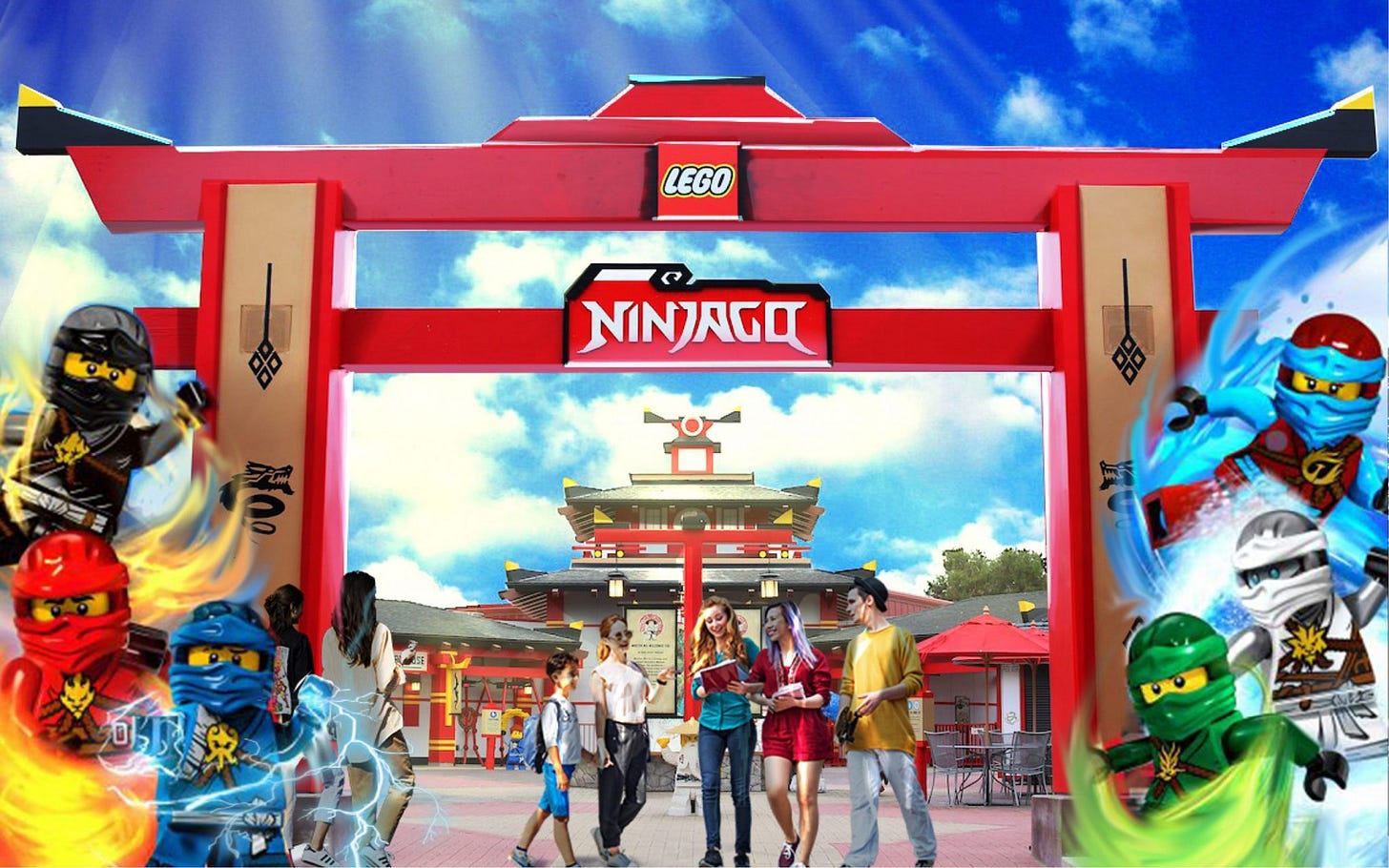
However, much like Disney are starting to find out with Marvel, there’s only so many times you can juice your own I.P. before it starts running dry. LEGOs most successful I.P. in Lego Ninjago (at least in our houses) is no longer as potent as it once was.
Fear not, as this is where LEGO’s unique power-play comes into play.
Borrowed I.P. New sets = new relevance = new revenue streams 🤩
The beauty of the bricks and what they can build, mean that LEGO don’t have to rely on creating a conveyor belt of their own I.P. to keep their flywheel spinning.
As LEGO, through partnerships with other brands from Porsche to Harry Potter; help them drop higher-priced sets that tap into the equity, appeal, and fanbases that other brands have painstakingly grown over many years.
Not a bad position to be in.
Growing LEGOs appeal

Growing LEGOs revenue lines
And just when you thought it couldn’t get any better… the form those partnerships take in new product drops, also create the perfect modular media format that can make LEGOs marketing feel much bigger than it otherwise might.
So why is that?
New product drops = The perfect format to game the modern media ecosystem 📱
New sets, create new news.
New news, whether we like it or not is what keeps the flywheel of the modern media ecosystem spinning; which LEGO takes full advantage of each and every time they drop a new set.
Let’s play with this from a few angles.
New sets or even just the hint of a new set that’s coming often go viral with just a simple key visual and associated social media post that works the algorithms at META or Musk Towers super hard; in doing so increasing LEGO’s visibility.
LEGO can boost these viral posts with paid if they want to, but they rarely need to, as journalists are happy to do that work for them.
New sets create opportunities for LEGO and their partners to create newsworthy stunts across owned and earned media to draw people into them; a bit like what they pulled off with Formula One ahead of the Miami Grand Prix to co-promote their new range of F1 themed sets.
Look how much fun everyone’s having.
LEGO have even become adept at creating these moments for themselves; tying in their product lines into the cultural calendar to get people talking about what they’re bringing to market; like when they transformed their stores into florists for the day to promote their floral range for Valentine’s recently.
Niiiiice.
New sets that owing to the virtual spaces they’re starting to add within the likes of Fortnite and other owned gaming properties; can now be played with before those sets launch and create new ways for people to “buy” them.
Ramping-up excitement, enthusiasm and desire to purchase those sets (or elements from them) before they drop in the real world; but also generating incremental revenue streams by making those virtual characters buyable in-game.
I haven’t done the maths but my son William says a skin in Fortnite would definitely be more expensive than a mini-fig in real life.
Makes you think…
New sets that when they do start to become available IRL, keep people glued to unboxings, reviews and buildalongs that do so well within a YouTube or Twitch environment where watchers*watchtime is the ultimate goal for creators.
Like this review of the new Natural History Museum set on YouTube…
…Or this Megamix of every LEGO Minecraft set ever made, made in one video…
More watchers * more watch time = more ad-loads = more revenue for creators = more videos popping up about Lego’s next sets. The big wheel keeps on turning.
All of these tactics become plays in a scalable and repetable playbook (or maybe that should be instruction manual) that LEGO and their partners can roll-out time and again; making LEGO’s modest media investment feel 10X larger as a result.
With the net result being that LEGO continuing to grow their fans collections (and creating new fans too) that take pride of place in bedrooms and across the shelves of millions of homes around the world; shelves that we’ve both had to build and extend for our boys who are both massive fans of all things LEGO.
Which we believe, given how LEGO never, ever seem to be seen as “sellouts” or being predatory for constantly doing these collaborations; puts them in a unique Category of One.
Hats-tipped to them.
LEGOs Mastery of “UGP”. User Generated Product 📦
Just when you think they might run out of ideas at some point, think again.
As LEGO have quietly built one of the most sophisticated fan-sourced product pipelines in the business. LEGO Ideas + LEGO Masters = an ever-refreshing feed of brilliant set concepts that double as audience engagement tools at the same time.
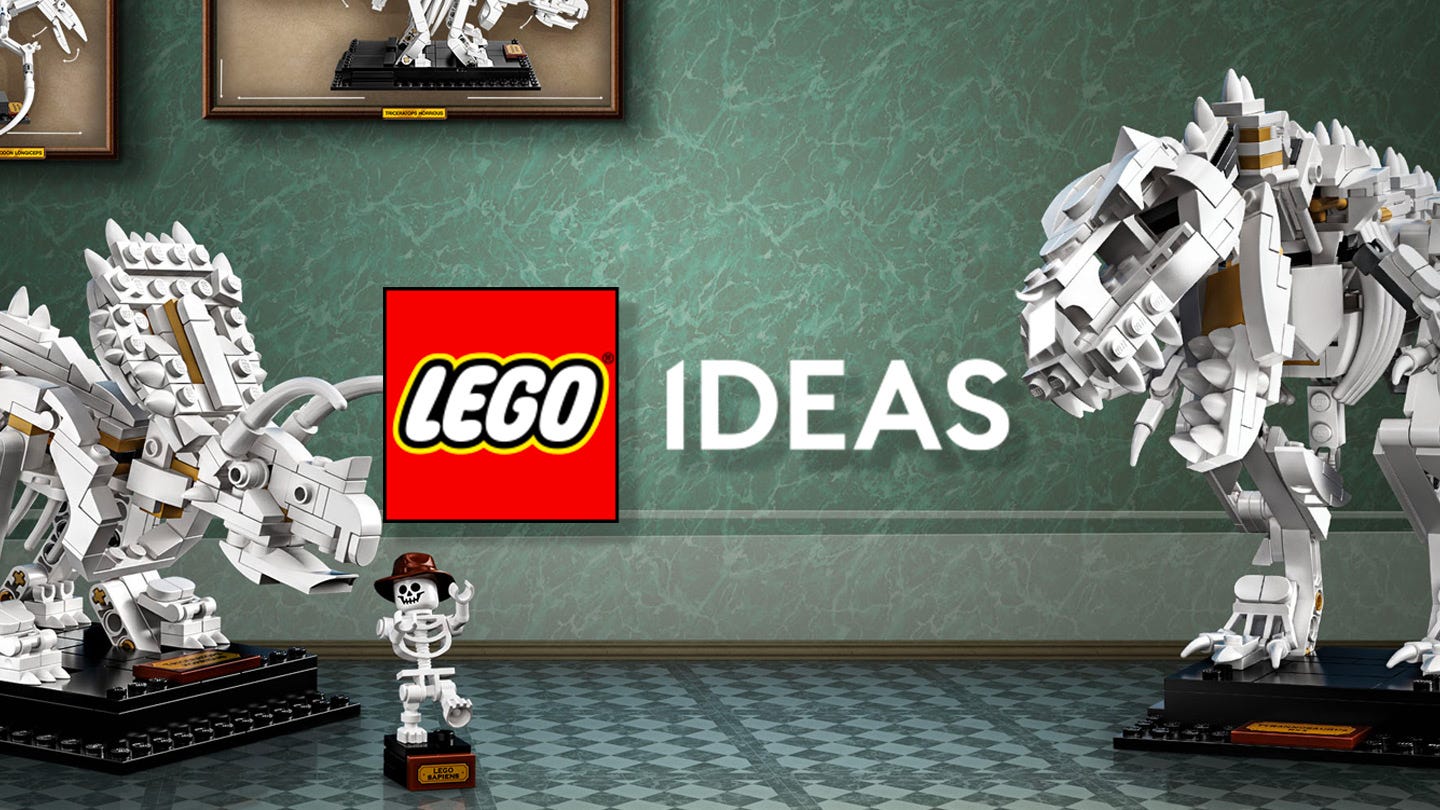
Both of which have contributed to the creation of many iconic sets that LEGO continue to sell at high volume and margin; be it LEGO’s Home Alone house which was originally an idea submitted within their LEGO Ideas platform, or LEGO Jaws scene which originally featured as the output of a film themed challenge in LEGO Masters Australia.
In a nutshell
LEGO’s genius isn’t just in what they build. It’s in how they let others build with them. From bricks to brands to fans; they’ve truly created a Category of One.
Until next time
That’s our take, but we know there are loaaaaaaaads of LEGO fans out there with their favourite sets, stories, and associated acts of storytelling they’ve witnessed in the real world. What are yours? Drop us a comment, share your all-time favourite build, or let us know which LEGO collab you’d love to see next.
Matt & Tom Xx












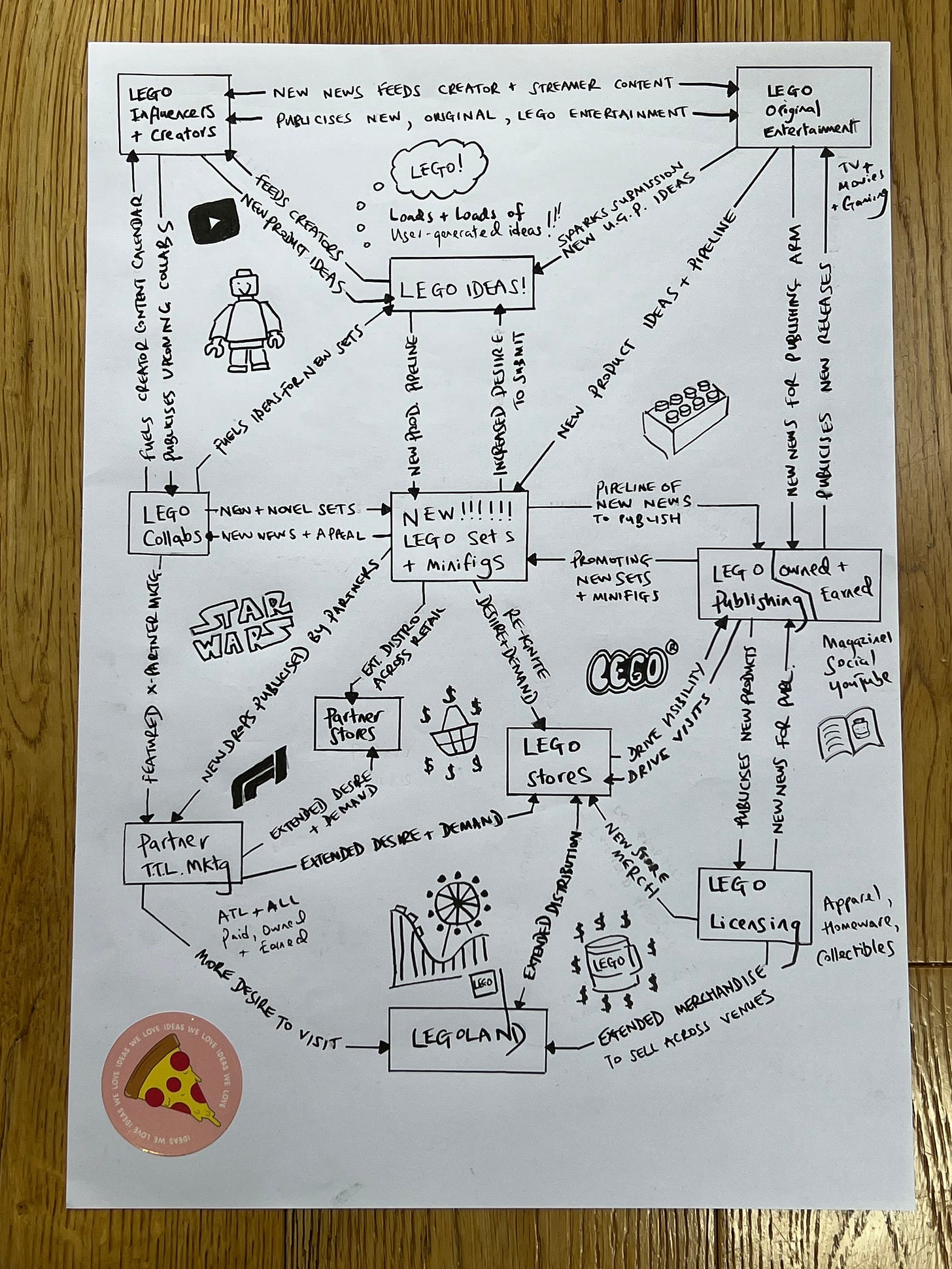
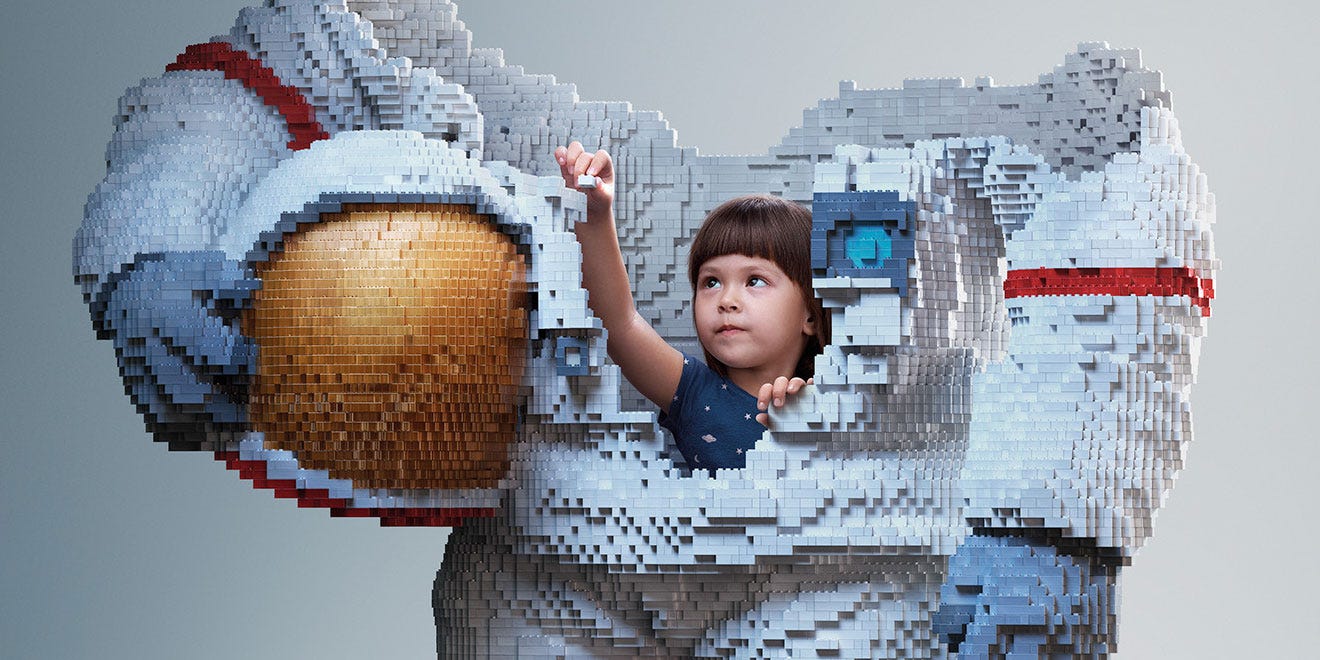
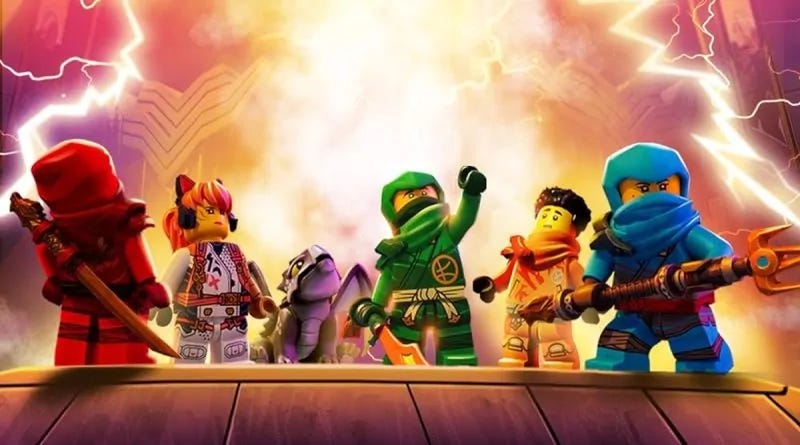




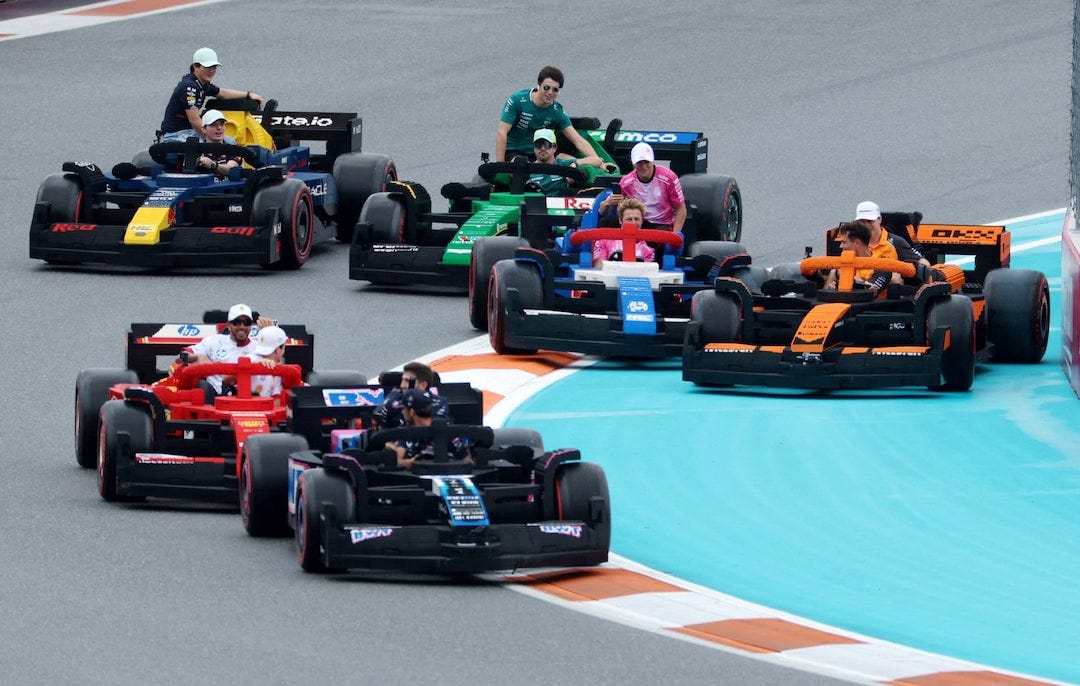
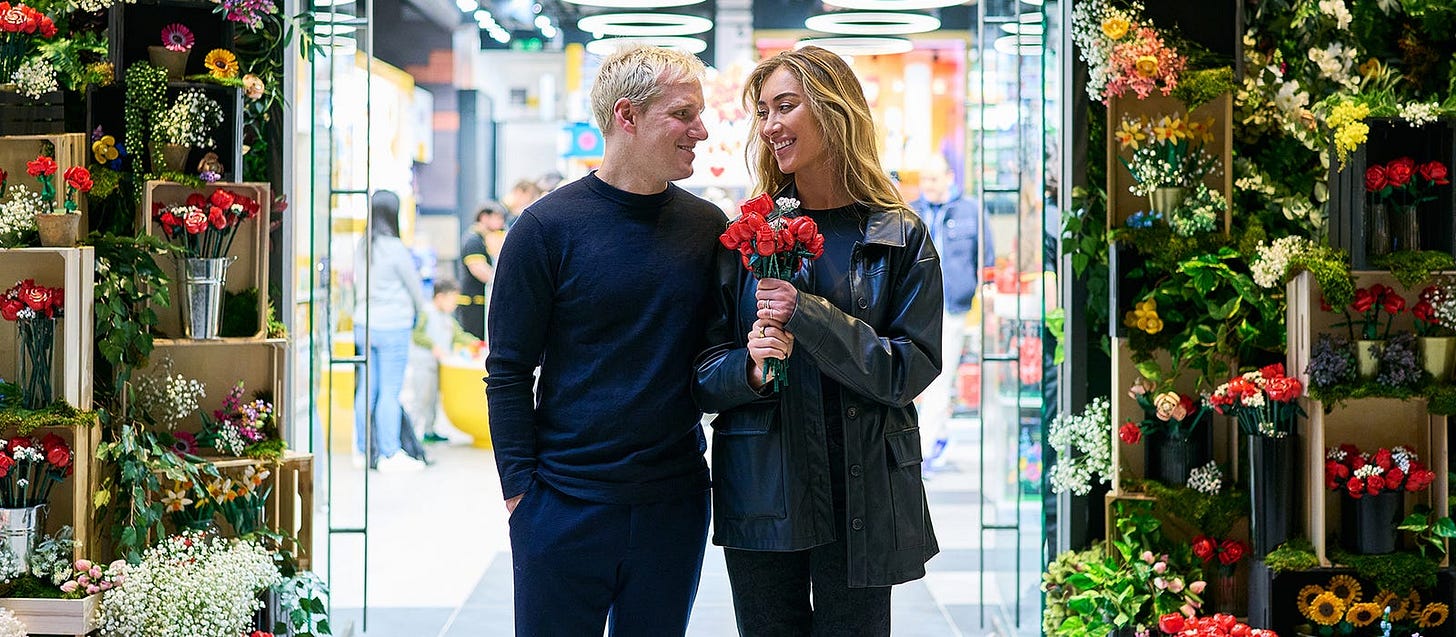
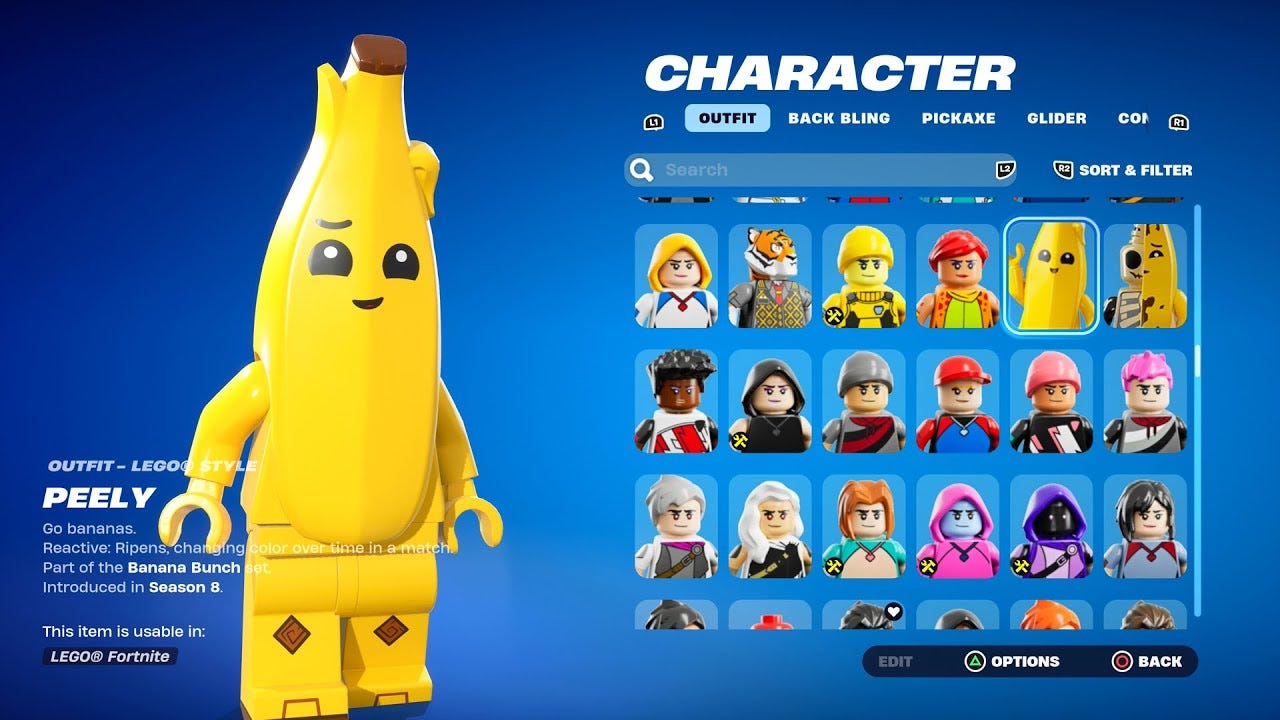



Sat there restacking and screenshotting like crazy, brilliant read as always both!